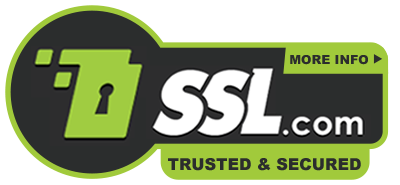With pension plans becoming increasingly rare and social security on the decline, planning for retirement has fallen on the individual. With all these different types of retirement accounts, you might be wondering where to store your hard-earned money. Explore four popular retirement plans to see which one is the best fit for you.
1. The 401(k) or Standard Retirement Plan
The 401(k) is the most common type of retirement plan. It’s an employee-sponsored retirement plan, so your employer might match a percentage of your contributions depending on where you work. Some of the biggest pros of opening a 401(k) include:
- Tax-free growth. Your contributions reduce your taxable income for the year. You’ll need to pay taxes on the money once it’s withdrawn during retirement.
- Convenience. Most 401(k)s are easy to create and maintain. In general, employees can automatically contribute a portion of their income every month.
- High contribution limits. The contribution limits for a 401(k) are higher than the limits for standard IRAs.
- Employer matching contributions. If your employer offers this, their matching contributions are basically free money.
- Flexibility. If you change employers, you can usually roll the money over into a new 401(k) or retirement plan.
While there are lots of benefits to opening a 401(k), there are also some drawbacks, including:
- Employee-sponsored retirement plans, such as a 401(k), are usually limited to certain investment options. Plans like an IRA typically have more options.
- New employees might have to wait a few months before opening or contributing to their accounts.
- Your 401(k) might be subject to a vesting schedule, which means it could take several years before you fully own your employer’s matching contributions.
- The company that manages your 401(k) will probably charge maintenance and investment fees, which can add up over time.
2. The Traditional IRA
An individual retirement arrangement (IRA) is a savings plan that’s largely opened and maintained on an individual level. Most citizens who make a taxable living are eligible for an IRA, making this a viable option for employees who don’t have an employee-sponsored retirement plan. You can set up an IRA at a bank or brokerage firm and add designated retirement investments. Some of the main advantages of a traditional IRA include:
- More control. Since you own and operate your IRA, you can choose what and how to invest, or you can hire someone to advise you.
- More investment options. IRAs provide a greater selection of investment options than a typical 401(k), including stocks, mutual funds, bonds, and cash.
- Anyone can open one. Unlike 401(k)s, you don’t need an employee to open an IRA, just a taxable income.
- Tax advantages. Like a 401(k), IRA contributions reduce your total taxable income and grow your money tax-free until you withdraw it.
The cons of opening a traditional IRA include:
- Low contribution limits. IRAs have lower annual contribution limits than your average 401(k) account. Contribution limits are also modified based on your income, and your IRA contributions may not be tax-deductible unless your yearly income is below a certain amount.
3. The Roth IRA
The difference between a Roth IRA and the typical IRA is when you reap the tax benefits. With a traditional IRA, you don’t pay any income tax on your contributions, but you pay tax on the money when you make a withdrawal. The Roth IRA basically functions in the opposite way—you pay taxes on your contributions, but you get to withdraw your retirement money without taxes. In other words, you only pay taxes when the money goes into your account.
Which one should you choose? Experts recommend making this decision based on your predicted retirement tax levels. Many retirees pay fewer taxes due to having a lower income. If this is the case, you should probably choose a traditional IRA. If you predict that your taxes will be higher at the age of retirement, then a Roth IRA might be the best option for you.
4. The SEP IRA
A SEP IRA, or simplified employee pension IRA, is a retirement plan for self-employed people and small business owners. Technically, any size business can open a SEP IRA, and they tend to be easier to manage than a 401(k). A SEP IRA is like a traditional IRA, but SEP IRAs have higher contribution limits. The biggest benefits of opening a SEP IRA include:
- Higher contribution limits. SEP IRA owners can store greater retirement savings in a SEP IRA than they can in a normal IRA. Self-employed workers and employees can contribute up to 25% of their own/their workers’ income.
- Employees are 100% vested. Unlike a 401(k), employees fully own all employer contributions as soon as they’re deposited.
- More investment options. Like a typical IRA, a SEP IRA offers greater investment options than a 401(k). If you’re self-employed, you might be able to set up a SEP IRA at your usual bank or financial institution.
Now that you know the difference between four popular retirement funds, you can start planning for your future. Read more tips about budgeting and financial planning when you visit The General’s blog. If you’re looking for cheap auto insurance, get an insurance quote in under two minutes and see how much you can save.








